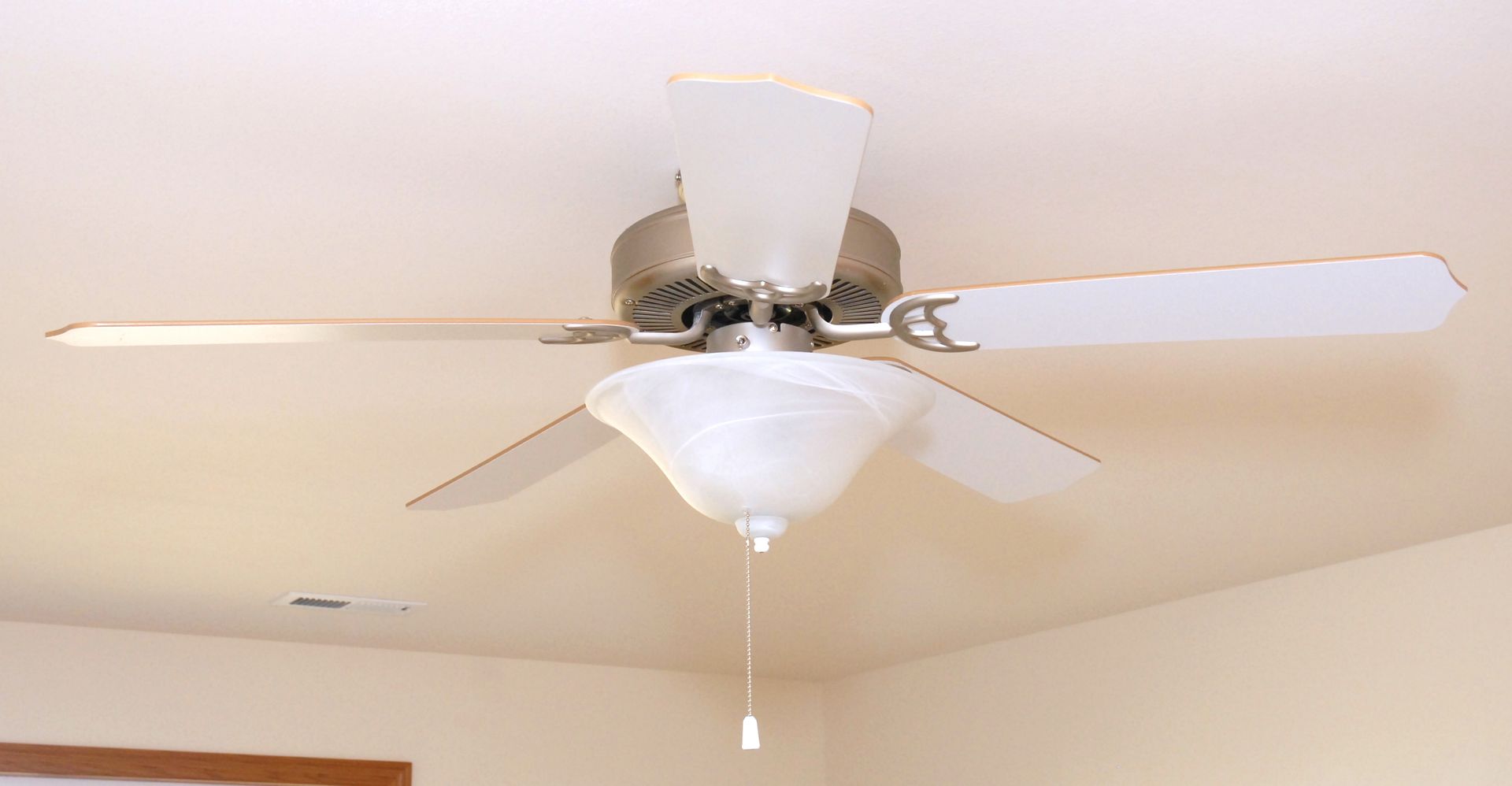October 1, 2025
Is your ceiling fan not performing like it used to? Learn about the key signs that indicate it's time to replace it. This article will guide you through each symptom, helping you make an informed decision for maintaining a comfortable and efficient home environment. A well-functioning ceiling fan is crucial for both comfort and energy efficiency in your living spaces. Read on to discover when it's time to invest in ceiling fan installers to enhance your home's atmosphere and efficiency.
1. Unusual Noises
A. Types of Noises to Listen For
Ceiling fans are designed to operate silently, providing comfort without causing annoyance. However, you may start to hear grinding, squeaking, or clicking sounds that disrupt your tranquility. These noises can be a significant nuisance and a clear indication that there’s something wrong with your fan. Understanding the type of noise can help in diagnosing the issue; for instance, a humming noise might indicate motor issues, while clicking often suggests loose parts. Listening attentively can help you identify the problem and determine whether repairs or replacement are needed from ceiling fan installers.
B. Common Causes of Noisy Ceiling Fans
Noisy ceiling fans can result from several factors, including loose components, worn-out bearings, or accumulated dust. Poor installation practices might lead to imbalanced blades, causing them to wobble and produce noise. Over time, screws and other parts can loosen, leading to clicks or rattles during operation. Additionally, a fan operating for many years without maintenance may have worn motor bearings, which often result in grinding noises. Pinpointing these common causes is vital for addressing the problem effectively, whether through repair or replacement.
C. Temporary Fixes vs. Replacement Needs
Addressing noise issues can sometimes involve simple fixes, such as tightening screws or cleaning the fan's blades. In cases of loose components, a slight adjustment may be the only required solution to restore smooth operation. However, if you notice persistent noise after attempting basic repairs, this might suggest deeper mechanical failures like motor deterioration. When the issue stems from major internal components, replacing the fan might be more cost-effective than continuous repairs. Evaluating the extent of the problem will guide your decision on temporary solutions versus full replacement from ceiling fan installers.
D. Impact of Noisy Fans on Home Comfort
Constant noise from a ceiling fan can significantly impact your home's comfort and tranquility. Whether in a bedroom, living room, or office, a harmonious atmosphere is essential for relaxation and focus. The presence of continual disruptive sounds can lead to increased stress levels and hinder sleep quality. Therefore, addressing any abnormal noises your fan emits is crucial for maintaining a peaceful environment. Investing in a quiet, high-quality ceiling fan can enhance your home's overall comfort and functionality.
E. Professional Assessment for Noisy Fans
When tackling noisy ceiling fan issues, it may be helpful to seek professional advice if you're unable to identify or resolve the cause yourself. Certified electricians or ceiling fan installers can perform a comprehensive assessment of your fan. They can diagnose whether noise results from issues like improper mounting, motor wear, or electrical problems. According to HomeGuide, a ceiling fan should be installed eight to ten feet above the floor, with fans on high ceilings mounted using a downrod, which a professional can also verify. Gaining expert input ensures that your ceiling fan operates optimally or confirms the need for a replacement.
2. Inefficient Air Circulation
A. Signs of Poor Airflow
One of the primary functions of a ceiling fan is to circulate air efficiently within a room, providing comfort through airflow adjustments. A telltale sign of poor airflow is when the fan does not provide adequate cooling, even at higher settings. If you find yourself needing to pair your fan with other cooling methods during mild weather, it may be underperforming. Additionally, noticeable hot or cold spots in the room can signal inadequate air distribution. Evaluating your fan's effectiveness in maintaining a consistent room temperature is crucial for recognizing inefficiencies.
B. Evaluating Blade Condition and Alignment
The condition and alignment of fan blades play a significant role in ensuring efficient air circulation. If blades are warped, damaged, or misaligned, they may hinder the fan's ability to distribute air evenly. Over time, dust and grime accumulation on the blades can also reduce their efficiency. Regularly inspecting and cleaning the fan blades not only ensures optimal performance but also extends the life of the fan. If mechanical adjustments don't seem to help, hiring ceiling fan installers to replace faulty blades or the entire fan may be necessary.
C. Importance of Proper Fan Speed Settings
Understanding the correct usage of fan speed settings is essential for optimizing airflow and energy efficiency. Many fans come with multiple speed options, allowing you to adjust the airflow according to your needs. Using the incorrect setting may lead to overuse, decreased efficiency, and increased wear and tear on the motor. Familiarizing yourself with your fan's speed control system helps you utilize it effectively year-round, ensuring comfort while prolonging the fan's life. If your fan's speed settings don't function properly, it may indicate an underlying problem with the control mechanism or motor, prompting the need for replacement.
D. Troubleshooting Airflow Issues
When facing inefficient air circulation, troubleshooting may involve inspecting both the fan's mechanical condition and settings. Start by ensuring the blades are secure, clean, and properly aligned; if problems persist, investigate the motor or electrical connections. Adjust the speed setting and direction of rotation as per seasonal needs — counterclockwise in summer for cooling and clockwise in winter for warm air redistribution. If these measures do not restore adequate airflow, professional assessment may be necessary. Persistent circulation issues often indicate an aging or malfunctioning fan, highlighting the potential need for replacement.
3. Wobbling or Imbalance
A. Causes of a Wobbly Ceiling Fan
Wobbling is a common issue that affects the balance and performance of ceiling fans. It often results from uneven blade alignment, loose mounting, or imperfections in the fan's structural integrity. Over time, components can become misaligned due to regular use, leading to a wobbly operation. External factors, such as disturbances during cleaning, can exacerbate or lead to such imbalances. Identifying and understanding these causes is critical for addressing wobbling issues effectively.
B. Safety Concerns with Unstable Fans
Stability in ceiling fans isn't just about efficient operation; it's also a matter of safety. A wobbly ceiling fan poses various risks, such as potential detachment from its mount or damage to the motor. This instability can lead to safety hazards, especially in homes with children, where accidents can occur. Moreover, prolonged wobbling can cause wear and tear on the fan's internal components, leading to more severe malfunctions over time. Addressing these concerns through timely repairs or replacement from ceiling fan installers ensures both safety and reliability.
C. Simple Adjustments to Try First
If your ceiling fan wobbles, start with basic adjustments to potentially rectify the issue. Ensure all screws and connections in the fan's mounting system are tight and secure; loose fittings often contribute to imbalance. Check each blade for even support, making minor adjustments if needed to achieve uniform alignment. Using a blade balancing kit can also help in fine-tuning the fan's balance, minimizing potential wobble. Taking these initial steps offers a straightforward resolution to minor balance problems before considering more complex solutions.
Replacing a ceiling fan can be necessary for both performance and safety. By recognizing the signs outlined in this article, you can ensure that your home stays comfortable and efficient. Consider replacing your old fan when these symptoms arise to take advantage of modern features and benefits. Not only does this improve the air circulation and energy efficiency in your living space, but it also contributes to the aesthetic and environmental sustainability of your home. Staying aware of when to upgrade allows you to maintain an optimal living environment. Be sure to reach out to Bybee Electric today to learn more about our expert ceiling fan installers!

